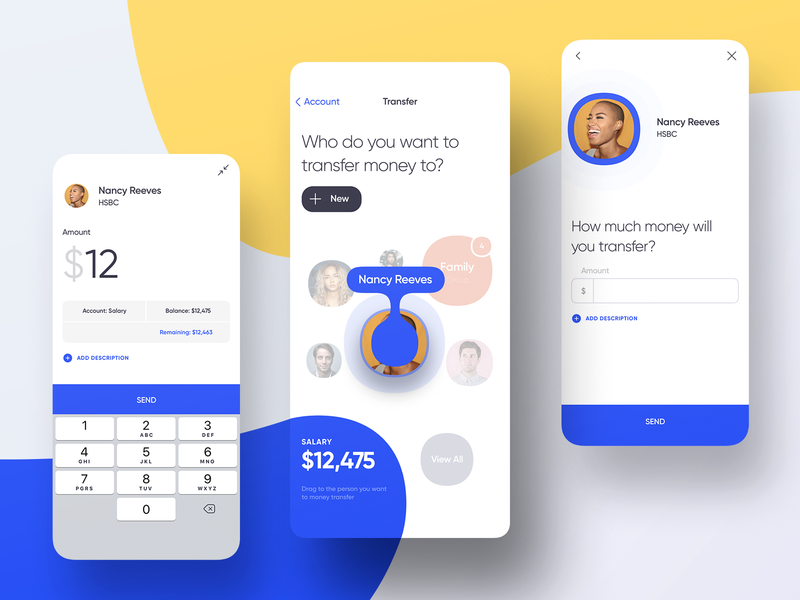Contents:


Before SWIFT, Telexwas the only available means of message confirmation for international funds transfer. Low speed, security concerns, and a free message format hampered Telex. In other words, Telex did not have a unified system of codes like SWIFT to name banks and describe transactions. Telex senders had to describe every transaction in sentences that the receiver interpreted and executed.
The reports enable filtering based on region, country, message types, and related parameters. The message standards also describe the actions expected of the message receivers, and, because some business processes require several messages to be exchanged, they also specify the order in which messages should be sent and received. Messages sent by our customers are authenticated using our specialised security and identification technology (Files can also be sent via our FileAct messaging service. The connection descriptions apply to files as well as messages).
- Our comprehensive range of solutions connect your back-office systems to Swift and enable you to send and receive financial messages.
- These SWIFT numbers may differ based on whether you’re receiving funds in U.S. dollars or foreign currency.
- The recent SWIFT related posts have been pretty popular, and many of you have contacted me asking for more detailed information about SWIFT message types.
The Swift community keeps growing and we record new peak messaging days several times a year. The growth in message volumes and users generates economies of scale which we return to our community through message price reductions. All Swift messaging services can be combined with a range of standard and optional features.
Want to learn more about trade finance? Download our free guides
This led to many human errors, as well as slower processing times. Swift Standards acts as Registration Authority for several standards that define universal codes for common data items, or reference data. RAs are appointed by the International Organization for Standardization to ensure the integrity of the reference data defined by ISO standards, and to publish the data in an accessible form for the benefit of the user community. Swift Standards also contributes to the formalisation and implementation of other reference data standards, notably the ISO Legal Entity Identifier , which is increasingly required for regulatory reporting purposes. Financial messaging standards specify these codes wherever possible to minimise the ambiguity of data.
Swift Translator, a Translation solution to define, validate and translate messages to and from any format by combining Swift’s standards expertise with cutting-edge technology. Treasury plays a crucial role in supporting financial objectives and informing strategic decisions. Secure global bank communications, operational efficiency and control, regulatory compliance, and effective liquidity and risk management are essential to support growth and create competitive advantage.
You can learn more about the standards we follow in producing accurate, unbiased content in oureditorial policy. SWIFT has also launched additional services as described above, backed by SWIFT’s long history of data. These services include business intelligence, reference data, and compliance services and offer SWIFT other income streams.
The difference between SWIFT messaging types: MT799 and MT760 [UPDATED 2022]
Our different interfaces all manage the Swift protocols needed to access the Swift environment, whilst the different options are tailored to support different services and functionalities, depending on customer needs. MyStandards, a collaborative web platform to better manage global standards and related market practice. A MT103 message is considered a “Single Customer Credit Transfer” and is used to instruct a funds transfer. This means that the change will not be that big for corporate-to-bank communication, as long as we consider only demand guarantees and standbys. Dependent undertakings, unfortunately, are a whole other story. Both issues could be solved by permitting the use of the structured formats for dependent undertakings as well.
Hope that has given you an insight into the different SWIFT message types, and an understanding of the various available messages. The remainder of this section discusses these categories and the message types within each category. SWIFT has retained its dominant position in the global processing of transactional messages. It has recently forayed into other areas, such as offering reporting utilities and data for business intelligence, which indicates its willingness to remain innovative.
SWIFT FIN is a message type that transmits financial information from one financial institution to another. The first number identifies the category to which the message belongs, while the second and third numbers identify the message type. The global ISO standard for financial messaging also reduces fragmentation and improves interoperability on key services such as instant payments – domestic and cross-border, Open Banking, API platforms and other overlay services. This message type is sent by or on behalf of the financial institution of the ordering customer to another financial institution for payment to the beneficiary customer. The platform uses a standardized proprietary communications platform to allow the transfer of secure financial transactions, but doesn’t hold funds on its own, and doesn’t manage external client accounts. MyStandards is a collaborative web platform that simplifies how you manage financial messaging standards.
Managing Online Payment Risks in Payment Systems
The organisation had sent me MT103 FORM and said that the money is now lying with the state bank of India and they have not rejected the transaction. Without transaction data and analytics to get clear visibility into the payments environment, it’s impossible to identify transaction performance issues, or detect fraud and other anomalies. The text of a SWIFT message and the authentication key were used to generate a message authentication code or MAC. The MAC ensured the origin of a message and the authenticity of the message contents. Direct debit is a payment method, by which a pre-authorised agreement enables one organization to debit money automatically from the bank account of another individual or organization.
How do banks talk to each other and what are the different types of messages used by SWIFT? – Trade Finance Global
How do banks talk to each other and what are the different types of messages used by SWIFT?.
Posted: Mon, 06 Mar 2023 08:00:00 GMT [source]
We’re here to help you transact securely and reliably, comply with regulation, improve operational efficiency and innovate at scale to serve your customers better. TFG Finance Ltd is an introducer, not a lender, working with Limited Companies and Incorporated Bodies who may pay us a commission. In addition to his work at TFG, Deepesh is a Strategic Advisor for WOA, and works closely with ITFA. He also sits on the Fintech Working Group of the Standardised Trust.
Encryption is added as the messages leave the customer environment (or customers’ partners’ environments) and enter the Swift environment. Our comprehensive range of solutions connect your back-office systems to Swift and enable you to send and receive financial messages. Fast, reliable and secure support for businesses the world over. The second digit represents a group of related parts in a transaction life cycle. SWIFT messages consist of five blocks of data including three headers, message content, and a trailer.
Celebrity Gossip “Blind Items”: Why Anonymous Taylor Swift Rumors … – The Daily Beast
Celebrity Gossip “Blind Items”: Why Anonymous Taylor Swift Rumors ….
Posted: Fri, 05 May 2023 07:50:16 GMT [source]
This dramatic expansion of data means that infrastructures will need to be redefined to manage the additional ISO information. SWIFT was founded in the 1970s, based on the ambitious and innovative vision of creating a global financial messaging service, and a common language for international financial messaging. With international money transfers amounting to trillions globally each day, SWIFT codes exist to ensure the safety, security, and straight through processing of all those transactions. Can you please tell me which is the most used swift message type.
Upcoming trends in commercial banking: what you..
Message types defined in ISO15022 “ISO15022 Data Field Dictionary – Index of Messages”. The downside of this free format flexibility is that automation is difficult. Picking out the parties in the transaction, the guaranteed commitment or even the guarantee amount or expiry date requires that the information in the narrative is parsed. These are messages from a user to SWIFT or from SWIFT to a user, but not from one user to another. When the group takes the value “9” like in MT19X, the message belongs to common group messages that are used for cancellations, queries, advices, answers and to handle other exceptions.
The SWIFT system is electronic and uses a cloud platform to quickly transmit codes to and from banks. Because of their reliance on SWIFT to conduct fast, seamless, secure communication, countries around the world have an incentive to remain in good standing with the organization. SWIFT is a neutral organization operating for the benefit of all of its members, but it is overseen by central banks from Group of Ten countries.
Integrated channels: The next frontier beyond omnichannel distribution – McKinsey
Integrated channels: The next frontier beyond omnichannel distribution.
Posted: Thu, 04 May 2023 00:00:00 GMT [source]
Yes, but doing so relies on slower, legacy systems to process the payments . This makes international payments more difficult, slower, costlier, and uncertain. Because all countries rely on SWIFT to conduct fast, seamless, secure communication, they are incentivized to remain in good standing with the organization. Central banks oversee SWIFT from Group of Ten countries, but it is a neutral organization operating for all its members’ benefit. You may be asked for the country you’re sending to, the currency you wish to send in, and the above information. Build your in-house expertise or take advantage of our insights for advice, planning and implementation.
The MT message formats were standardized in ISO 15022, which was published by the International Organization for Standardization in 1999, with SWIFT as the registration authority. The FIN messaging system, according to SWIFT, is now used by over 11,000 financial institutions and their corporate customers, who exchange more than 30 million messages daily. Today financial players routinely send structured electronic messages to one another to perform common business processes, such as making payments or confirming trades. In its ongoing role as a financial messaging standardiser, the Swift Standards group works with the financial community to define standards for these messages. Swift’s messaging services are trusted and used by more than 11,000 financial institutions in more than 200 countries and territories around the world.

A bank needs to be a SWIFT member to receive the SWIFT code and be part of the network. Then, for any transaction made by banks or financial institutions on an international level, they will use their unique SWIFT code, which acts as an international digital language. In November 2022, SWIFT will officially begin transitioning to ISO 20022, the most recent set of standards for secure messaging between financial institutions. The migration from MT to ISO payment messages comes with many benefits for banks, financial institutions, corporations, businesses and individuals. A Singe Customer credit transfer is used to convey a funds transfer instruction in which the ordering customer or the beneficiary customer, or both, are non-financial institutions from the perspective of the Sender.
The recent SWIFT related posts have been pretty popular, and many of you have contacted me asking for more detailed information about SWIFT message types. To get the full lowdown on SWIFT message types, you need to read SWIFT’s very own Standards Inventory Of Messages. Its 47 pages worth of SWIFT message types, nice bedtime reading!! To save you the pain, I have read and provided an overview of the main message types below. Unless you like talking about SWIFT message types, you don’t need to know most of these. But it is useful to know they exist and if you ever needed there are a range of messages out there.
Its use is subject to bilateral/multilateral agreements between swift message typeser and Receiver. Telexwas the only available means of message confirmation for transferring funds internationally. Telex was hampered by low speed, security concerns, and a free message format, meaning it did not have a unified system of codes like SWIFT to name banks and describe transactions. The Society for Worldwide Interbank Financial Telecommunications is a bank code and member-owned cooperative essential for sending international or cross-border payments as it provides transaction security. This makes it a vital part of the financial side of global businesses. Though SWIFT primarily started for simple payment instructions, it now sends various messages, including security, treasury, trade, and system transactions.
You can get more information about the BIC code by reading the article about the SWIFT BIC code. It is thanks to this code that messages are routed from the sender to the recipient. Payment analytics tools allow banks and financial institutions, payment providers, acquirers and merchants to take historical data and apply it to things that are happening to a business right now. This applies to sales and payment processing or any online services in the payment space. Banks and financial institutions globally are entering a new era, as they prepare to transition their payment systems from using the SWIFT message system to the newer, highly structured and data-rich ISO financial messaging standard.
